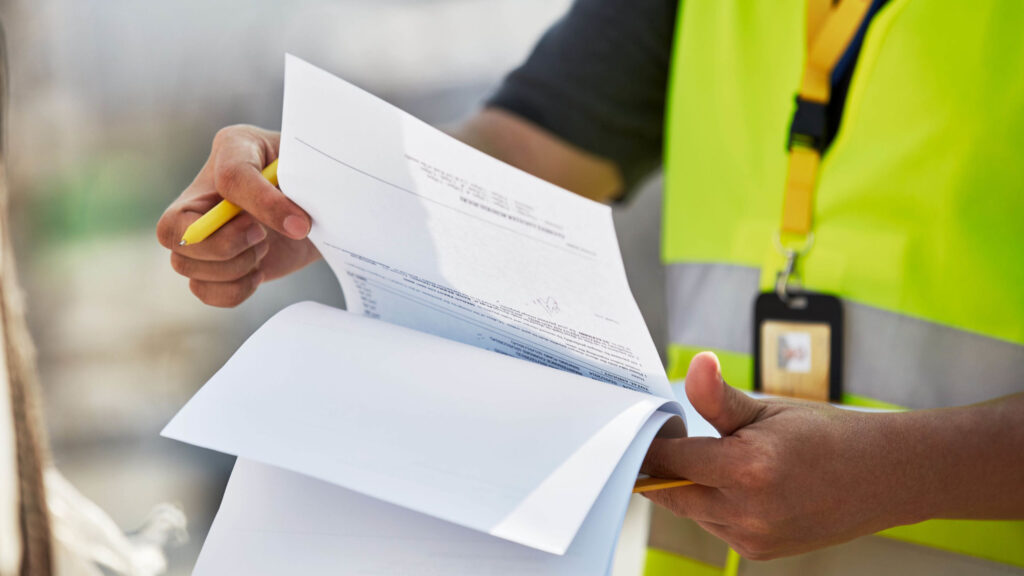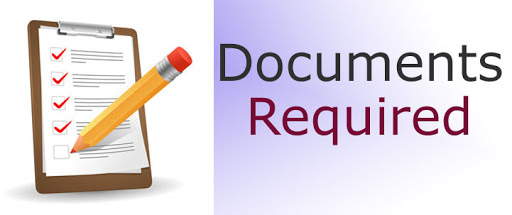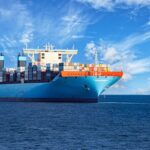- By TOP CHINA FREIGHT
- October 10, 2025
- Shipping
Table of Contents
Customs clearance China to UK is one of the most important steps when importing goods between these two major trading nations. While China provides cost-efficient manufacturing, the UK enforces strict customs controls after Brexit. Therefore, understanding import regulations, required documents, and duty calculation is essential for smooth clearance and on-time delivery. This guide explains everything you need to know—from customs procedures to taxes, shipping methods, and expert tips for avoiding clearance delays.

Why Is Customs Clearance So Important for UK Imports?
Customs clearance ensures that goods entering the UK comply with regulations, duties are paid, and the shipment is legally approved for entry. Since the UK left the EU, customs procedures have become more detailed, even for small businesses importing from China.
Proper customs compliance benefits you by:
- Preventing unexpected delays at ports.
- Avoiding fines or seizure of goods.
- Ensuring accurate import duty and VAT calculation.
- Building trust with logistics partners and HMRC.
Moreover, efficient customs clearance strengthens your supply chain reliability and customer satisfaction, especially for e-commerce and wholesale trade.
What Are the Main Customs Procedures Between China and the UK?
The customs clearance process involves several stages, from export in China to delivery in the UK:
| Stage | Description |
|---|---|
| 1. Export Declaration (China) | The supplier declares goods to Chinese Customs before shipping. |
| 2. Transport | Cargo is shipped by sea, air, or rail. |
| 3. Arrival at UK Port | Goods arrive at a UK entry point like Felixstowe, Southampton, or Heathrow. |
| 4. Import Declaration | The importer or agent files a customs entry with HMRC using the CDS system. |
| 5. Duty & VAT Payment | Import duties and VAT are calculated and paid. |
| 6. Release & Delivery | Once cleared, goods are released and delivered to the destination. |
Every shipment must follow this sequence. Delays often occur if documents are incomplete or HS codes are incorrect.
What Documents Are Required for Customs Clearance?

Having accurate documentation is vital to ensure smooth customs clearance China to UK.
| Document | Purpose |
|---|---|
| Commercial Invoice | Declares the value and details of the goods. |
| Packing List | Provides itemized shipment details. |
| Bill of Lading / Air Waybill | Proof of shipment and ownership. |
| Certificate of Origin | Confirms the country of manufacture. |
| Import Declaration (CDS) | Submitted to UK Customs by broker or importer. |
| EORI Number | Required for all UK importers. |
Double-check that product descriptions, HS codes, and values are consistent across all documents.
How Are Import Duties and Taxes Calculated in the UK?

Importers must pay customs duty and import VAT on goods arriving from China.
| Charge Type | Description | Typical Rate |
|---|---|---|
| Customs Duty | Based on HS code and product type. | 0–12% (average 4%) |
| Import VAT | Calculated on CIF value + duty. | 20% standard rate |
Formula Example:
If your CIF value is £10,000 and duty rate is 4%, then:
- Duty = £10,000 × 4% = £400
- VAT = (£10,000 + £400) × 20% = £2,080
Total Payable: £2,480
Tip: Businesses registered for VAT can reclaim the import VAT later through their VAT returns.
Which Shipping Method Is Best for Imports from China to the UK?
Depending on your product type, budget, and urgency, you can choose among sea freight, air freight, or rail freight.
| Mode | Transit Time | Cost | Best For | Pros | Cons |
|---|---|---|---|---|---|
| Sea Freight (FCL/LCL) | 30–40 days | Low | Bulk goods | Cheapest option, eco-friendly | Longer lead time |
| Air Freight | 5–9 days | High | Urgent cargo | Fast, reliable | Expensive |
| Rail Freight | 18–25 days | Medium | Medium-volume shipments | Balanced speed & cost | Limited routes |
Most importers prefer sea freight for large quantities, as it offers the best cost-efficiency per cubic meter.
How to Choose the Correct HS Code for Your Goods?
HS codes (Harmonized System codes) determine your import duty rate. Using the wrong code can lead to incorrect taxation or even fines.
| Product Category | Example Items | HS Code Range |
|---|---|---|
| Electronics | Phones, cables | 8517, 8544 |
| Textiles | Clothing, fabrics | 6109, 6203 |
| Furniture | Tables, chairs | 9401, 9403 |
| Machinery | Motors, parts | 8409, 8467 |
| Toys | Plastic toys, games | 9503 |
Always verify HS codes using HMRC’s tariff database or consult your customs broker before filing.
What Are Common Challenges During UK Customs Clearance?
Importers often face several challenges when handling customs clearance China to UK:
| Issue | Cause | Solution |
|---|---|---|
| Incorrect HS Code | Misclassification | Consult a customs agent or HMRC database |
| Missing Documents | Incomplete invoice or CO | Double-check paperwork before shipment |
| Delayed Payment | VAT or duty unpaid | Ensure funds are ready for clearance |
| Port Congestion | Peak season traffic | Ship earlier or use alternate ports |
Preparation and proactive communication with your forwarder can prevent most of these problems.
How to Speed Up the Customs Clearance Process?
Here are practical tips to ensure faster clearance for your imports:
1.Submit declarations early through the CDS system.
2.Match invoice, HS code, and product details across documents.
3.Ensure your EORI number is valid and active.
4.Work with experienced brokers familiar with UK–China trade.
5.Pay duties promptly using HMRC’s deferred account.
Additionally, some freight forwarders offer pre-clearance services, allowing paperwork to be processed before the cargo arrives.
How Do Brexit Rules Affect Imports from China?
After Brexit, imports from China are no longer simplified through EU rules. UK importers must now comply with HMRC’s full customs declaration system.
Key updates include:
- Importers must hold a UK EORI number (starting with GB).
- All imports must be declared via CDS (Customs Declaration Service).
- The UK Global Tariff now replaces the EU Tariff.
- VAT must be accounted for at the point of import.
Despite the new rules, the UK’s digital customs system has made clearance faster and more transparent.
Case Study: Smooth Customs Clearance from Ningbo to London

A UK importer ordered household appliances worth £50,000 from Ningbo. The freight forwarder filed customs documents electronically via CDS three days before vessel arrival.
Key Actions Taken:
- Verified HS codes (8509) in advance.
- Used deferred VAT account for faster release.
- Coordinated with port agents for pre-clearance.
Result:
Shipment cleared in less than 24 hours after arrival, avoiding demurrage fees and saving approximately £800 in potential port storage costs.
This case shows how preparation and professional customs handling can significantly reduce risks and expenses.
Should You Use a Customs Broker or Do It Yourself?
Hiring a customs broker for customs clearance China to UK can save time and ensure compliance.
| Option | Pros | Cons |
|---|---|---|
| Use a Broker | Expert knowledge, faster clearance, reduced errors | Service fee applies |
| DIY Clearance | Lower cost | Risk of delays and penalties if errors occur |
If you’re importing regularly or handling high-value cargo, using a professional broker is strongly recommended.
Conclusion
Successfully managing customs clearance China to UK requires understanding documentation, duty calculation, and compliance procedures. By preparing accurate paperwork, choosing the right HS codes, and partnering with experienced customs brokers, importers can ensure smooth entry and timely delivery of their goods. A clear understanding of UK import taxes and shipping options will help you save costs and avoid unnecessary delays—keeping your supply chain strong and efficient.
Need a Shipping Quote?
If you want expert guidance and peace of mind, our team is ready to assist.
Top China Freight offers tailored solutions to help businesses of all sizes ship more reliably from China.

FAQ
Q1: How long does customs clearance take in the UK?
Usually 1–2 working days for compliant shipments. Delays occur if documents or payments are incomplete.
Q2: What is an EORI number and why do I need it?
It’s an Economic Operator Registration and Identification number required for all importers to trade with non-UK countries.
Q3: Can I reclaim import VAT paid to HMRC?
Yes, if your business is VAT-registered, you can reclaim import VAT through your VAT returns.
Q4: What goods are restricted for import from China?
Items like firearms, hazardous chemicals, and certain food products require special import licenses.
Q5: Is sea freight cheaper than air freight to the UK?
Yes, sea freight is 70–80% cheaper, but it takes longer. Air freight is ideal for urgent goods.



